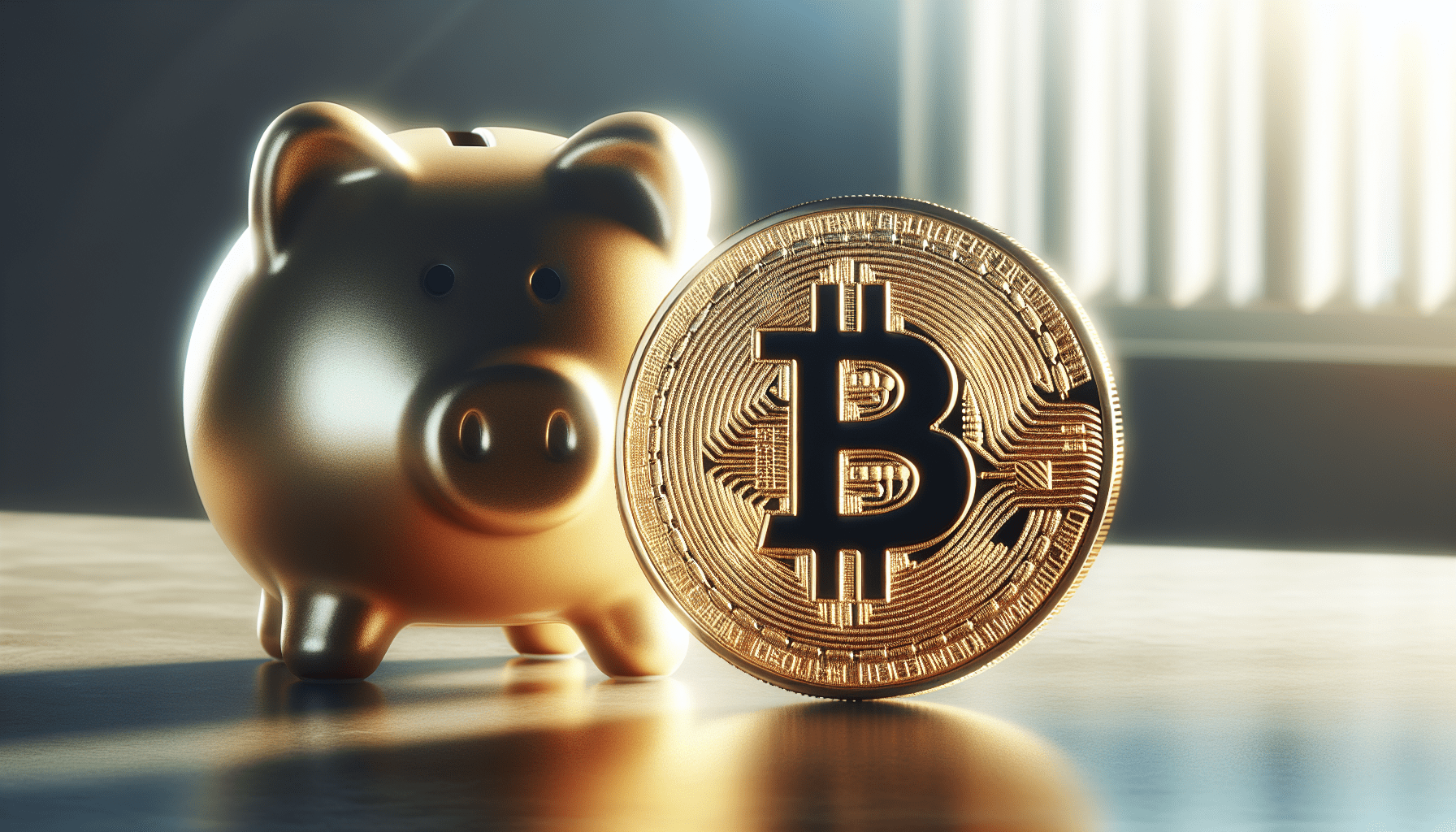Have you ever wondered how digital currencies, especially cryptocurrencies like Bitcoin and Ethereum, might shape the future of pension funds? It’s a thought-provoking question that merges the cutting-edge world of blockchain technology with the age-old practice of saving for retirement. As you ponder this question, it’s worth considering how traditional pension funds have long been a key pillar of retirement planning. With the arrival of cryptocurrency, the potential for change and evolution in this area is indeed significant.
Understanding Pension Funds
Pension funds have always functioned as a safety net, designed to give financial support during retirement. They exist to assure individuals that they will have a steady income after leaving the workforce, often accumulated over many years of employment. These funds traditionally look to a variety of low-risk investments, like bonds and securities, to grow the capital that will eventually be dispersed to retirees. As a future retiree, knowing where and how your hard-earned money is invested is essential.
Defining Pension Funds
At their core, pension funds are investment pools that collect contributions from employees, employers, or both. These funds are then invested, often conservatively, to generate returns that will be used to pay out future pensions. The goal is to achieve steady growth over time, ensuring that retirees receive the income promised to them. As you can imagine, the reliable nature of these funds has made them a cornerstone of retirement planning.
Types of Pension Funds
Pension funds can generally be divided into defined benefit plans and defined contribution plans. Defined benefit plans promise a certain payout at retirement, determined by factors such as salary history and length of service. As a participant, you benefit from the predictability of knowing exactly what you’ll receive upon retirement. On the other hand, defined contribution plans, such as 401(k)s, depend on the contributions made and the performance of the investments chosen within the plan, which means the final amount may vary.
An Introduction to Cryptocurrency
Cryptocurrency has catapulted into mainstream awareness in recent years, making waves across financial markets around the world. These digital, decentralized currencies offer an alternative to traditional fiat money and hold the promise of new ways to transfer and store value. If you’re curious about how cryptocurrency could possibly mesh with something as established as pension funds, you’re not alone.
What is Cryptocurrency?
Cryptocurrency is a digital or virtual form of currency that uses cryptography for security. Unlike traditional currencies issued by governments (fiat currencies), cryptocurrencies are decentralized and typically based on blockchain technology—an immutable distributed ledger system. This means that cryptocurrencies operate on networks of computers, which makes them resistant to government interference or manipulation. Bitcoin is the most well-known example, though thousands of others, such as Ethereum, Ripple, and Litecoin, also populate the digital landscape.
Key Characteristics of Cryptocurrency
A few main characteristics set cryptocurrency apart from traditional forms of money. It’s decentralized, which means no single entity oversees or administers it. Transactions are secured by cryptography, ensuring high levels of security. Cryptocurrency also operates with high transparency due to the public ledger that records all transactions. Unlike stocks and bonds, cryptocurrencies are generally known for their volatility—a trait that’s both alluring to some investors due to its potential for high returns, and alarming to others who seek stability.

Why Consider Crypto in Pension Funds?
With its unique properties, cryptocurrency offers an enticing yet complicated proposition for pension funds. The question many people, perhaps yourself included, are asking is: could cryptocurrency potentially serve as a valuable asset within these investment portfolios? The answer isn’t straightforward. Yet, looking at both the inherent possibilities and challenges, you can start to see why this idea is gaining traction among some financial planners and fund managers.
Potential Benefits
The inclusion of cryptocurrency in pension funds provides a host of potential benefits. For starters, a well-chosen cryptocurrency could deliver high returns, significantly enhancing the value of the pension fund portfolio. Cryptocurrencies also offer a degree of diversification that can help hedge against the risks associated with more traditional asset classes. Imagine the possibilities: acquiring assets that grow during periods of traditional market downturns.
| Potential Benefits of Crypto in Pension Funds |
|---|
| High Return Potential |
| Diversification |
| Inflation Hedge |
| Enhanced Liquidity |
Challenges and Risks
Of course, investing in cryptocurrency also brings challenges and risks. The most pronounced of these is volatility. Cryptocurrencies have been known to experience dramatic fluctuations in value, which can be a significant risk factor for the more conservative strategies traditionally employed in pension fund investments. Additionally, the regulatory environment surrounding cryptocurrency is constantly evolving, creating a layer of uncertainty. As a pension fund manager, navigating these risks requires in-depth understanding and strategic planning.
| Key Challenges of Crypto in Pension Funds |
|---|
| Volatility |
| Regulatory Uncertainty |
| Security Concerns |
| Lack of Historical Data |
The Landscape of Crypto in Pension Funds
To really grasp the potential of crypto in pension funds, examining the broader landscape is essential. A number of funds and financial organizations have already begun exploring these opportunities, though the journey has been measured and cautious. By observing real-world instances of these strategies in action, you can achieve a clearer picture of the direction this trend might take.
Leading Examples
Some pension funds have cautiously dipped their toes into the waters of cryptocurrency investments. For example, certain funds in the United States and Canada have made minor investments in crypto-assets, primarily as a means to diversify their investment portfolios. These initial forays serve as case studies for others contemplating similar moves, illuminating both potential strategies and pitfalls.
Regulatory and Legal Considerations
Regulatory and legal considerations play a significant role in how pension funds might incorporate cryptocurrency. Different countries have varying stances on digital currencies, ranging from outright bans to full embrace, along with intricate tax implications. As someone who’s directly affected by these regulations, you may need to stay informed about the evolving policies on cryptocurrency within your own country, especially as they pertain to pension funds.

How Pension Funds Could Incorporate Crypto
If cryptocurrency is to become a significant component of pension funds, understanding the potential methods of integration is crucial. These methods can help structure how pension funds might responsibly embrace cryptocurrency, balancing potential rewards with the risks involved.
Direct Investment
Direct investment involves pension funds directly purchasing and holding cryptocurrencies. This option requires a deep understanding of the crypto market and considerable risk management due to inherent volatility. Sophisticated strategies akin to managing traditional assets could potentially be applied here, aimed at mitigating some of the associated risks.
Indirect Investment through Funds
Alternatively, pension funds might choose to invest indirectly by purchasing shares in companies that deal with cryptocurrency or blockchain technology. This could include technology firms, crypto exchanges, or companies that own significant crypto-assets. Such investments reduce direct exposure to cryptocurrency price fluctuations while still allowing pension funds to capitalize on the industry’s growth.
Safeguarding and Risk Management
Given the risks associated with cryptocurrency, particularly its volatility and security threats, safeguarding and managing these investments is paramount. As a participant in a pension plan, it’s comforting to know that fund managers have systems in place to protect assets.
Diversification as a Defense
Diversification remains a tried-and-true strategy to mitigate risk, and this is no different when it comes to integrating cryptocurrency into pension funds. By spreading investments across a broader range of asset classes, including a carefully measured and monitored allocation to crypto-assets, pension funds can buffer against inevitable market shifts.
Enhanced Security Measures
The security of digital assets is a paramount concern, leading to the adoption of enhanced security measures, such as cold storage solutions and multi-signature wallets. These measures protect the crypto-assets within a pension fund from potential theft and fraud attempts, providing peace of mind for investors.
The Future of Cryptocurrency in Pension Funds
While several factors currently hinder widespread adoption, the potential for cryptocurrency in pension funds remains a compelling topic for future exploration. In imagining the future, it’s intriguing to consider how regulations might stabilize, technologies evolve, and perceptions shift over time.
Predictions and Trends
Many financial experts believe that as blockchain and cryptocurrency technology matures, its adoption in traditional financial systems, including pension funds, could increase. Each advancement in regulation, infrastructure, and technology brings pension funds closer to integrating these digital assets. Predicting exact trends is difficult, however, innovation often involves experimentation and risk-taking—a path some forward-thinking funds might be willing to explore sooner rather than later.
Long-term Impact
Pondering the long-term impact of incorporating cryptocurrency into pension funds reveals several fascinating possibilities. Such integration could lead to new financial products, investment strategies, and perhaps even a redefined perspective on wealth management and retirement savings. As digital currencies grow in acceptance and stability, their role in pension funds may become more prominent, reshaping the landscape of retirement planning for generations to come.
As you consider the potential paths forward, it’s clear that this intersection of traditional and modern finance is thrilling, albeit fraught with challenges. The ongoing development of cryptocurrency could significantly influence how individuals approach retirement planning, making the evolving strategies and conversations well worth following. If you’re interested in securing a financial future that’s aligned with technological advancements, keeping a close watch on developments in this domain might just be the key.

